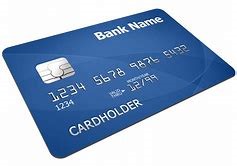Credit Card Interest Rates
[ad_1]
Why its important to understand credit card interest rates? Einstein put it best when he said, “Compounding interest is the greatest mathematical discovery of all time”. Now the question you need to ask is, “Do I want this force working for me or against me?” If you own a credit card and you carry-over balances from month to month then you’ve got that amazing force called compounding interest working against you.
In this article, I’ll try to explain how this “force” works against you month after month after month, in the form of interest upon interest. And perhaps, by helping you to gain a better understanding of how this “force” works and how important even a small change in the interest rate you are being charged effects you and families financial future. And hopefully, it will also inspire and motivate you to do whatever it takes to pay off your credit cards and initiate some type of savings plan so you can put this “force” to work for you.
Credit Card Interest Rates are Compounded
The interest you pay on your credit card balances are compounded, which means that you pay interest on the interest from the month before. A simple example would be that if you were being charged an interest rate of 2% per month, you would not be paying 24% per year. In reality, you would be paying 26.82%. A neat little trick that credit card companies use to pick up an additional point or two of interest is to calculate interest on a monthly rather than on a yearly basis. You pay more but you don’t know you’re paying more.
A Brain Teaser
Here’s a little brain teaser based upon what you’ve already learned. Would you rather have $ 1 million in cash or $ 10,000 in some form of savings account earning you a compounded interest rate of 20 percent per year?
Hmm, let’s see how that $ 10,000 would grow after 10 years – $ 61,917 or 20 years – $ 383,375 or 30 years – $ 2,373,763 or 50 years – $ 563,475,143.
After fifty years, you would have over $ 500 million. Of course, you would have to take inflation into account and if we used a figure of 5% per year, then that $ 500 million would have the buying power that $ 10,732,859 does today. Not a bad return on your investment of $ 10,000 but on a side note it also exposes another lesson in how the compounding rate of inflation destroys wealth but that’s the subject of another article.
Clearly, that question was a bit tricky because there’s so many variables to take into account that would influence what decision you would ultimately make – but you get my point, the power of compounding interest and by the way … it’s the primary way credit card companies make their money is a powerful “force”. It’s also the way pensions work and the reason the prices of things seem to rise massively as you get older. Be afraid … or at the least very wary of compounding interest.
Compounding Interest Can Really Add Up
Now, let’s look at a more real world example. Let’s say you have an average unpaid balance of $ 1,000 on a credit card with an APR of 15 percent.
First year interest would be $ 150. However, this amount is then carried-over and added onto the balance and interest is charged on that. As a result, year two interest would be another $ 172.50 for a total of $ 1322.50 and it continues to build year after year. Year three, four and five would look like this – $ 1,520, $ 1,749 and $ 2,011.
As you can clearly see, after just five years at 15%, you would owe double what you borrowed and after 10 years you would owe four times. I know it’s hard to believe but once again this simple “real world” example dramatically demonstrates the power of compounding interest.
If you let something like that carry on long enough, you end up paying on that same amount of debt for years and years and end up paying back many times what you originally borrowed and in some instances you still may not have completely satisfied the original debt . Unfortunately, most people simply don’t take the time to think through this out and they feel that the high and never ending payments are simply their fault for spending too much money to begin with.
The Three Percent Difference
You may feel that there’s not much that difference between a credit card interest rate that charges an APR of 15% versus one that charges an APR of 12% but then again after reading this article I’m sure you’ve realized that there is and so – that’s exactly what I’m going to show you. Remember the previous example that showed you would owe over $ 2,000 after only five years at 15% after borrowing an initial amount of $ 1,000.
That same example at 12% reveals the following: Year one – $ 1120, year two – $ 1254 and years three through five – $ 1404, $ 1573 and $ 1762 respectively. After the same five year period you would have saved nearly $ 250 or almost 25% in interest from a mere 3% difference in APR. Quite dramatic and hopefully it will help you convince you to make the necessary decisions to pay-off your credit cards and start saving so that you can put, “the greatest mathematical discovery of all time” to work for you … rather than against you.
This article may be reproduced only in its entirety.
[ad_2]
by Kevin Erickson

